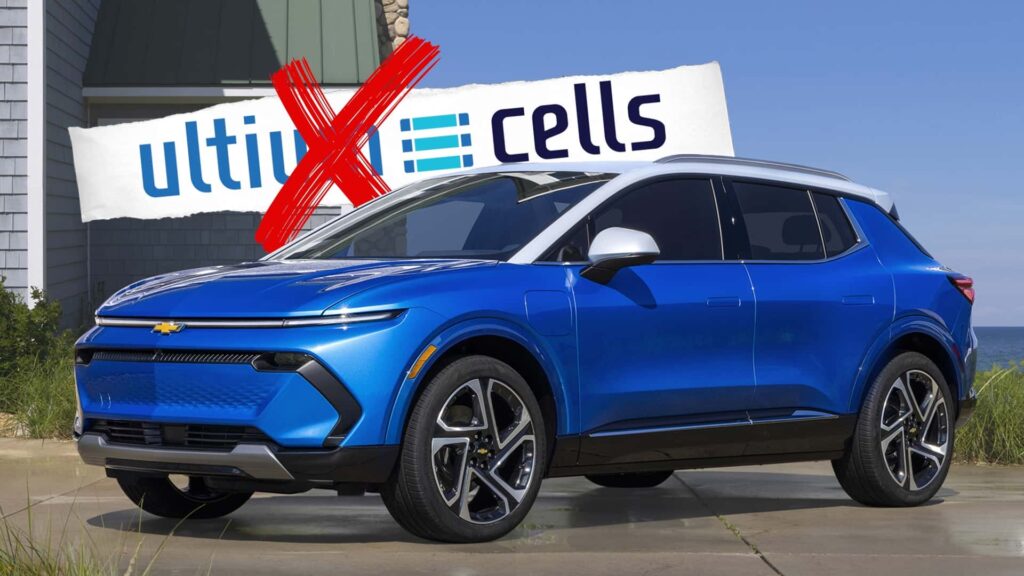- GM is discontinuing the Ultium branding
- The company plans to introduce new battery options, including a cheaper pack using the LFP chemistry that’s common in China.
- GM estimates the switch will contribute to a cost savings of as high as $6,000 from one EV generation to the next.
The race is on for cheap EVs. Seriously—almost every automaker is hellbent on duking it out to get cheaper EVs on the road, especially to compete with cheaper Chinese vehicles on America’s doorstep. It looks like General Motors may have finally found a way to cut costs significantly on the most expensive part of an electric car: the battery.
GM’s new Vice President of Batteries (a former Tesla exec), Kurt Kelty, laid out the strategy for cheaper batteries at GM’s Investor Day. The takeaway? All new approaches to battery chemistry, packaging, and underlying strategies in order to slash up to $6,000 off of every single EV it produces from one generation to another.

The kick-off is saying goodbye to Ultium—both the Ultium branding and the current Nickel Cobalt Manganese (NCM) cells that it uses today. GM is instead ushering in a new era of lower-cost Lithium Iron Phosphate (LFP) battery cells that it swears is going to be its secret sauce.
LFP isn’t necessarily a new technology, but it is significantly cheaper than what GM is doing today. The chemistry is more stable, better for the environment by not utilizing minerals like cobalt or nickel (both are supply-constrained and often sourced unethically) and fairly inexpensive to produce.
Don’t believe me? Well, there’s a reason that the now-discontinued Tesla Model 3 Standard Range and Ford Mustang Mach-E Standard Range used these cells. I’ll let you guess on that one.
Now, sure, there are some trade-offs. LFP batteries don’t offer the same energy density as current NCM cells, leading to lower overall range figures. They also don’t necessarily perform as well in the cold. But they’re good enough for most applications, offering hundreds of miles of range at an affordable price. That’s what matters here. The logic here seems to be: let’s get people into EVs first and then worry about performance. After all, ICE will still be around for a while.
And those vehicles that need the extra oomph? Well, GM isn’t abandoning NCM chemistry. The company will continue to use NCM chemistry for the foreseeable future. So high-performance EVs and trucks that need extra range and power for towing need not worry—there are options.

GM will also take a step back in its approach to a “one-size-fits-all” battery. While modularity undoubtedly plays a part in profitability, the automaker sees it as more advantageous to tailor battery packs to individual vehicles instead. The trick is to move from pouch cells to prismatic cells. The automaker says that this will allow for simpler and cheaper pack production by slashing the number of modules in each pack by up to 75%.
Less complexity, fewer costs, more savings. That’s the goal.
I want you to really think about what a dollar figure like $6,000 means. While GM is sure to keep some of that money to itself (it is out to make money, after all), that’s almost the equivalent of the consumer-facing $7,500 EV tax credit. Keep in mind that GM is also reaping the rewards of the Inflation Reduction Act’s 45X credits, which grants it $35 per kilowatt-hour for domestic battery cell production and $10/kWh for pack production. Both of those tax advantages won’t be around forever, so automakers getting to equilibrium sooner means a better chance for long-term, sustainable profits.
It’s a big shift, no doubt. GM is rethinking the entire strategy it spent so long setting up. Rebranding, rearchitecting, and realizing that being competitive means staying fluid. If GM wants to stay in the game while playing catch-up to Tesla as brands like BYD breathe down its neck, it must find ways to be more affordable and accessible. Cheaper batteries? That just might be the way.

